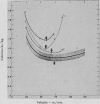Abstract
The development of bipedal plantigrade progression is a purely human, and apparently learned, accomplishment. Experimental findings confirm the hypothesis that the human body will integrate the motion of various segments of the body and control the activity of muscles to minimize energy expenditure.
Movements which are integrated for this purpose include vertical displacement of the body, horizontal rotation of the pelvis, mediolateral pelvic tilt, flexion of the knee, plantar flexion of the ankle and foot, lateral displacement of the torso and rotation of the shoulder girdle.
Raising and lowering the body results in gains and losses of potential energy, and acceleration and deceleration result in gains and losses of kinetic energy. The motions are so co-ordinated that a transfer of energy back and forth from kinetic to potential occurs during walking, which tends to minimize total energy expenditure as well as muscle work.
Full text
PDF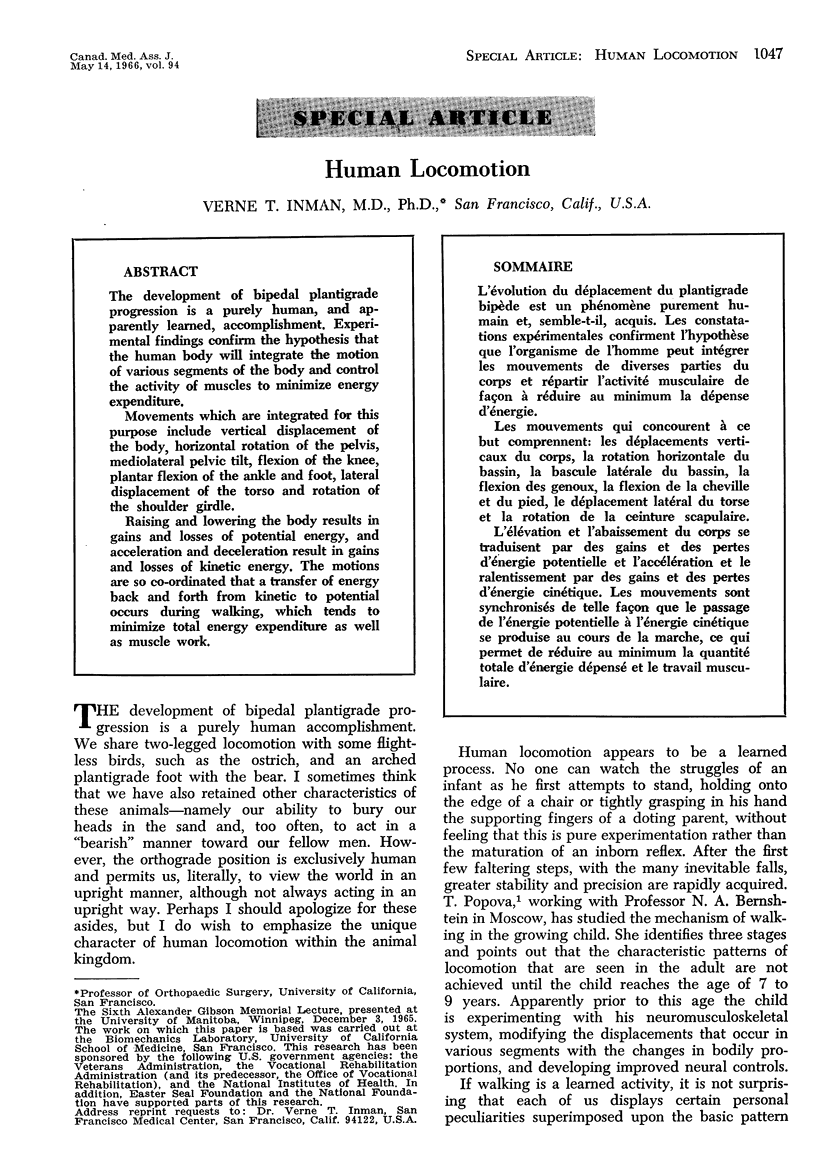
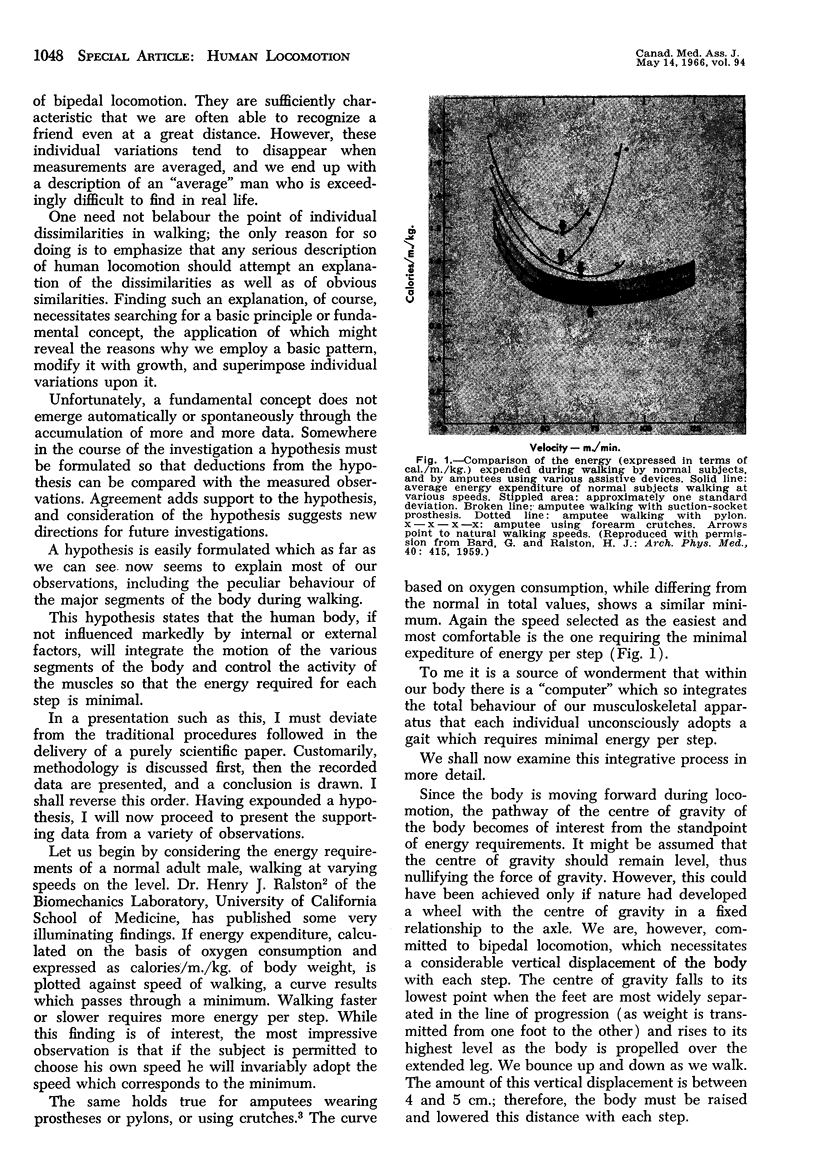
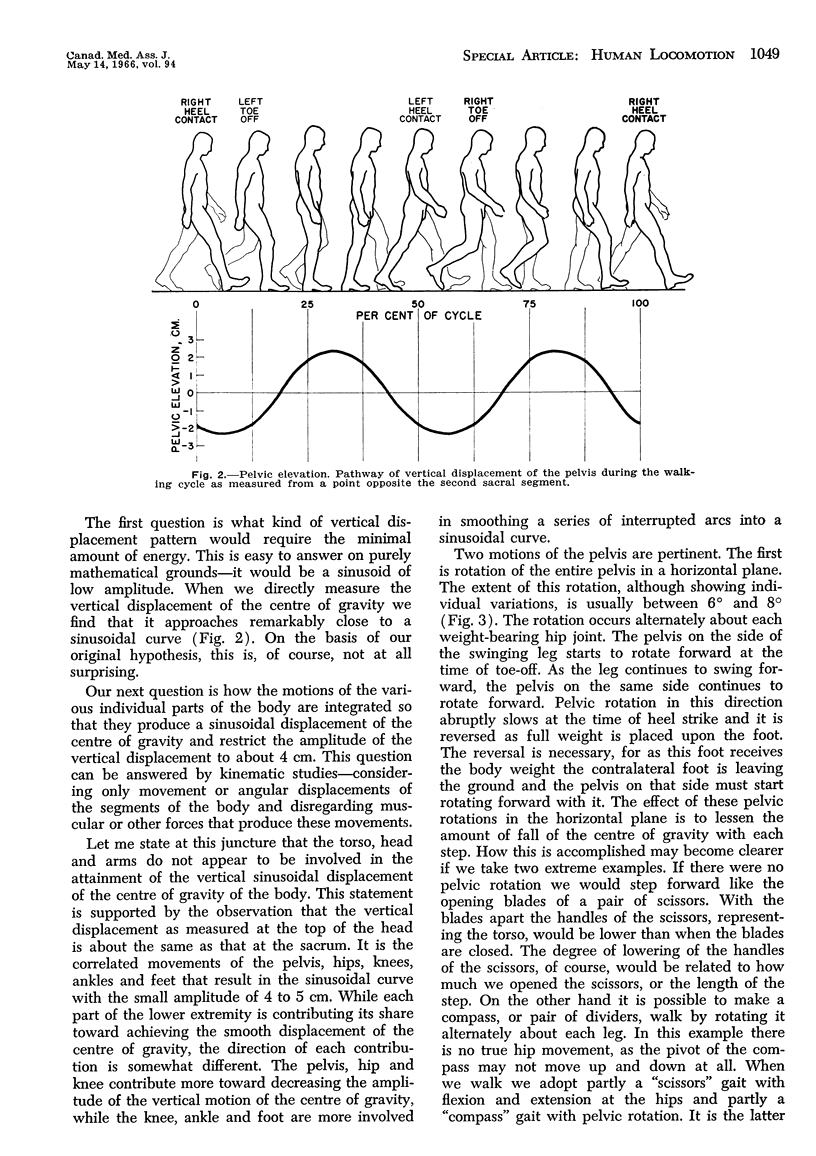
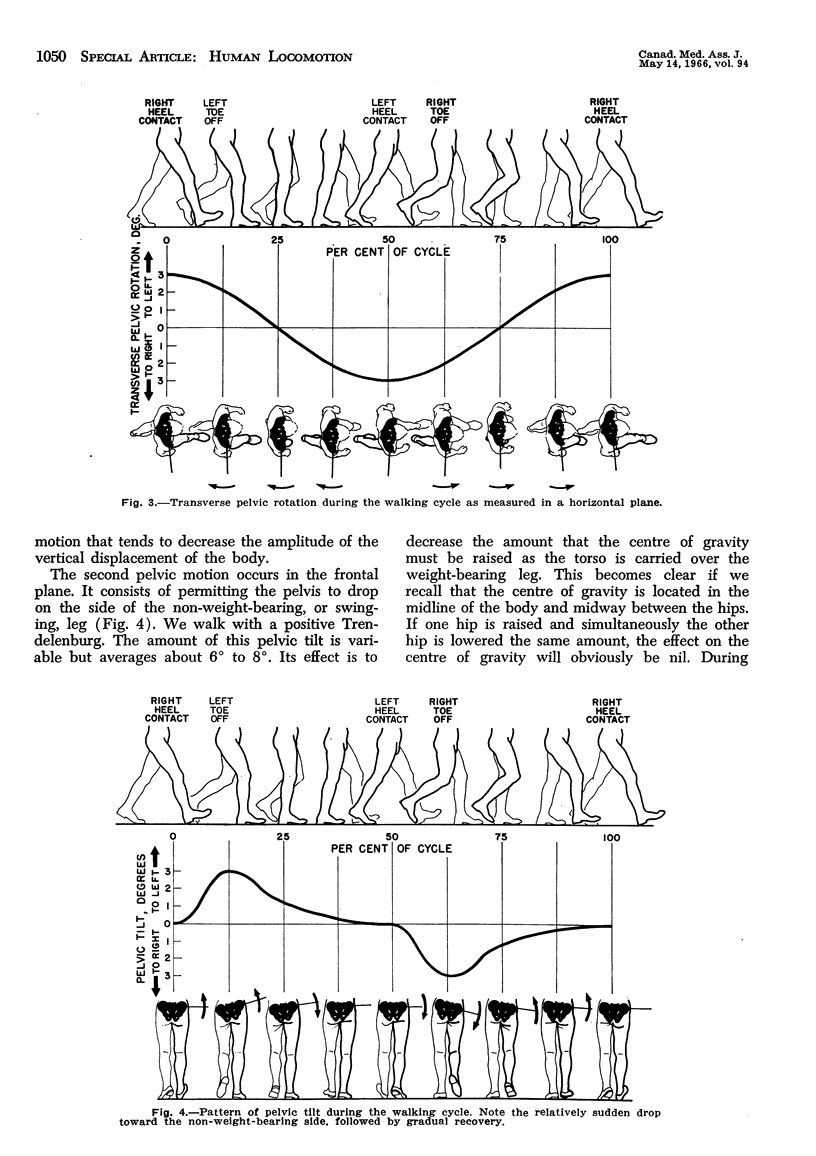
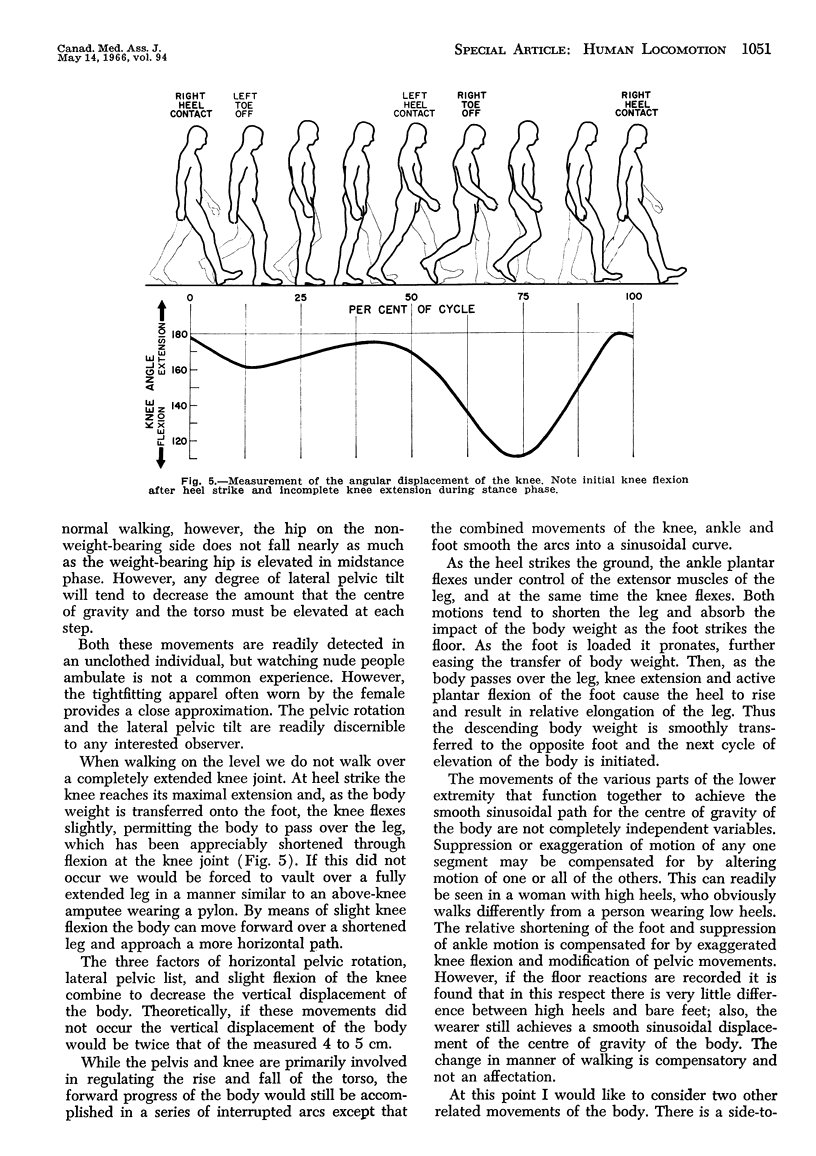
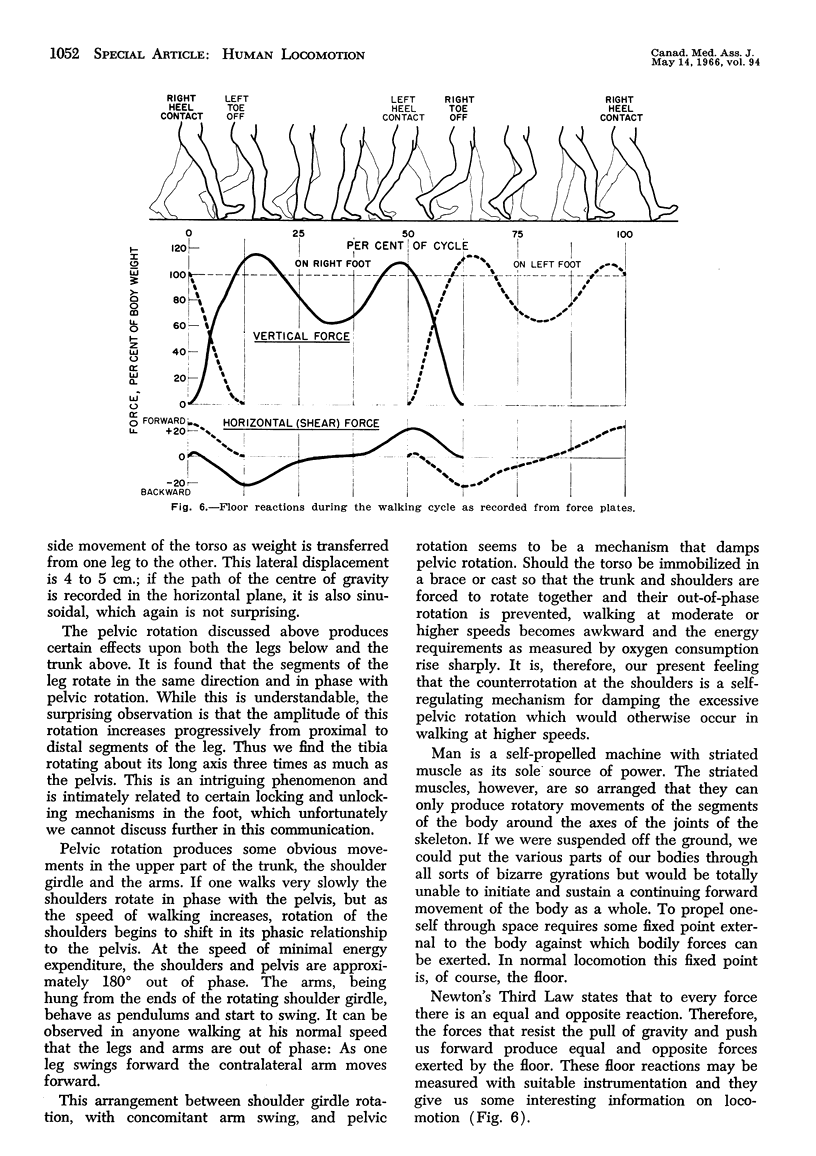
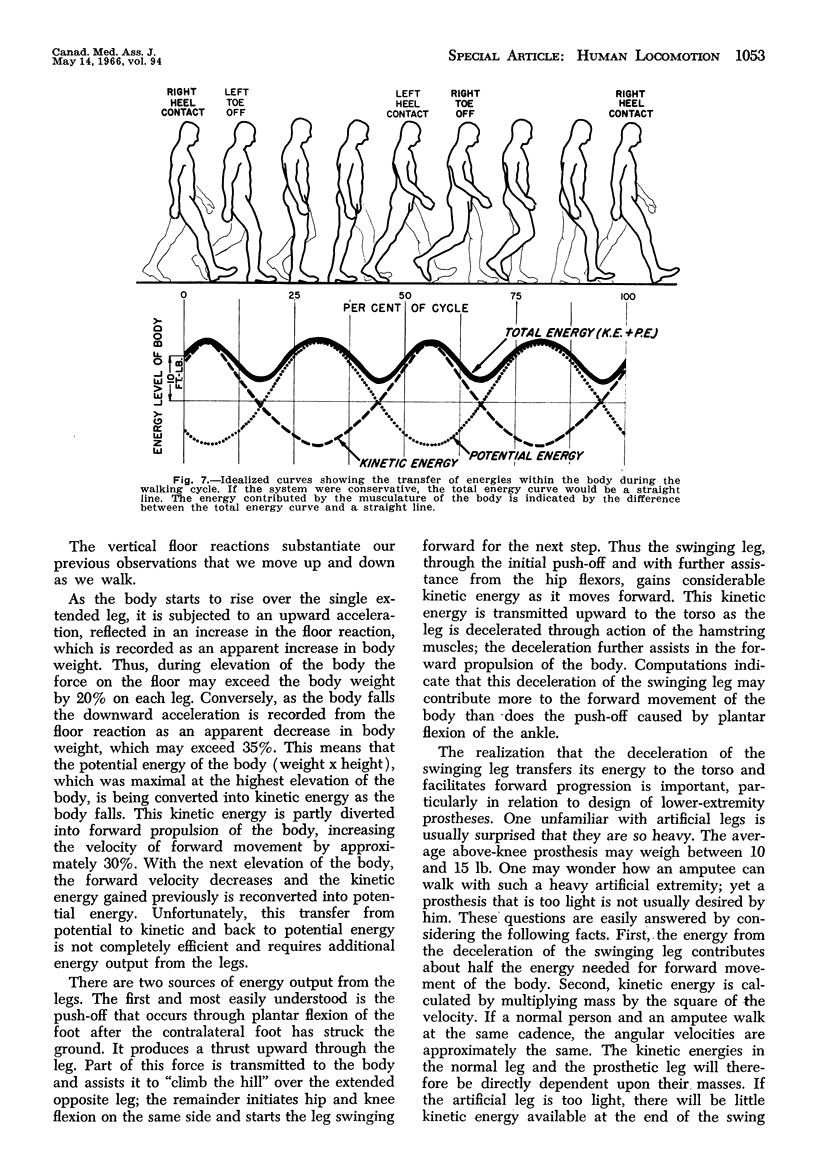
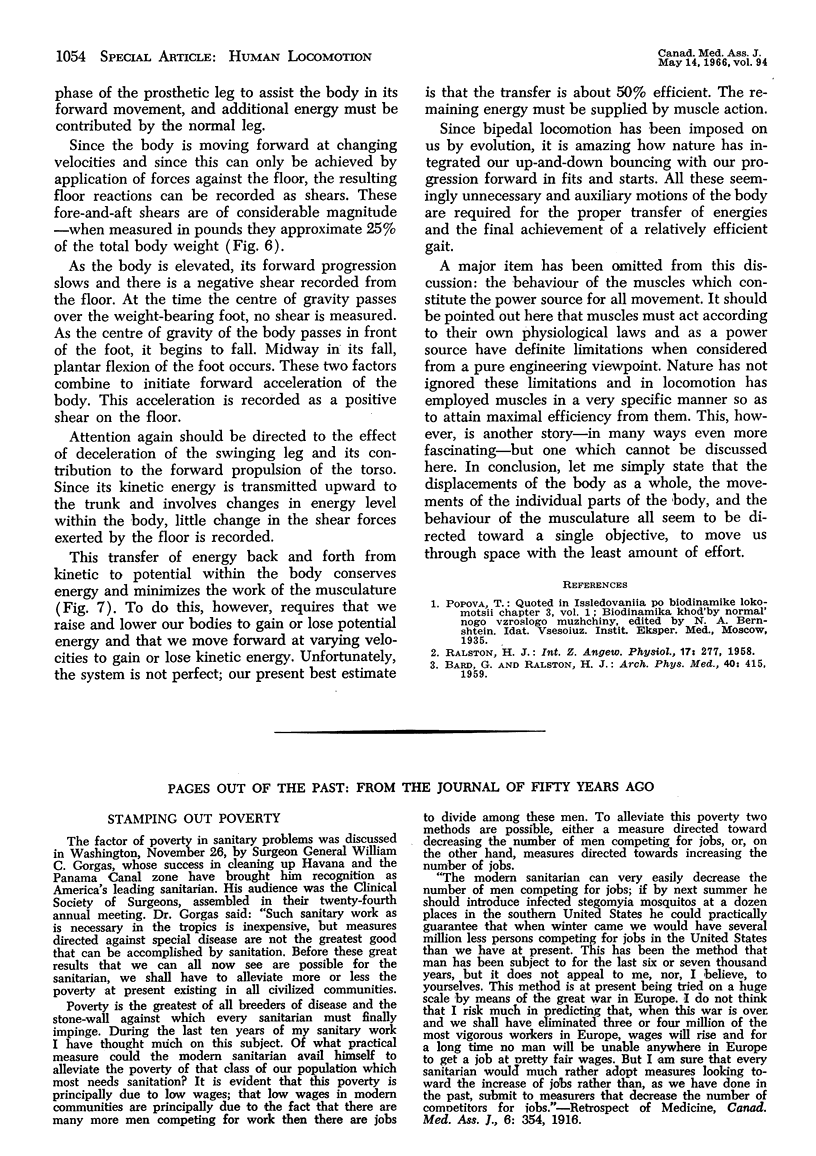
Images in this article
Selected References
These references are in PubMed. This may not be the complete list of references from this article.
- BARD G., RALSTON H. J. Measurement of energy expenditure during ambulation, with special reference to evaluation of assistive devices. Arch Phys Med Rehabil. 1959 Oct;40:415–420. [PubMed] [Google Scholar]
- BARD G., RALSTON H. J. Measurement of energy expenditure during ambulation, with special reference to evaluation of assistive devices. Arch Phys Med Rehabil. 1959 Oct;40:415–420. [PubMed] [Google Scholar]
- RALSTON H. J. Energy-speed relation and optimal speed during level walking. Int Z Angew Physiol. 1958;17(4):277–283. doi: 10.1007/BF00698754. [DOI] [PubMed] [Google Scholar]



